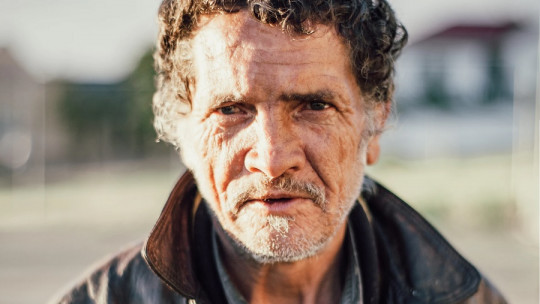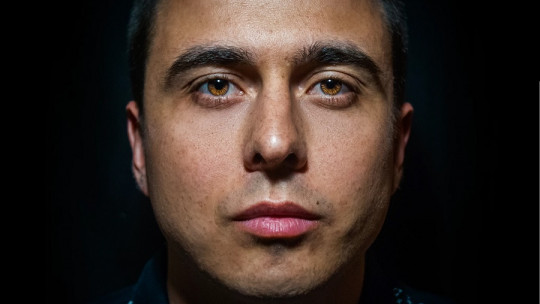Post-traumatic stress disorder is widely known, manifesting itself in people who have been victims or witnesses of a highly stressful event. These people must be helped with psychological treatment, given that the event causes consequences.
However, experiencing a tragic event is not the only way to suffer from traumatic stress. People who help, both in an emergency and in consultations, may suffer symptoms associated with PTSD, despite not having experienced the stressful event firsthand.
Secondary traumatic stress is a very common psychological condition in people who carry out humanitarian work. Below we will see in more depth what it is, what its risk factors, intervention and prevention are.
What is secondary traumatic stress?
Secondary traumatic stress is defined as a psychological condition in which negative emotions and behaviors occur when learning about a traumatic event experienced by another person
That is, it occurs when a person who frequently works with people who have been affected, usually in the humanitarian sector, is affected by that foreign pain in a pathological way. To this psychological phenomenon also It is known as vicarious traumatization, secondary traumatization, secondary persecution, and secondary traumatic stress
Natural disasters, sexual abuse and wars can affect many people on a psychological level. At first glance, it may appear to only affect those directly affected, such as the injured, sexual victims or people who have lost their home, as well as their families and eyewitnesses to the event. However, it can also affect helpers and workers specialized in emergency situations and people who, in a medical or psychological consultation, care for the victims.
Knowing about other people’s tragedies is a source of stress, a stress that, accumulated, can cause a truly psychopathological condition. Secondary traumatic stress is the materialization of that accumulated stress, which has not been able to be reduced or released due to not having asked for help.
Why many humanitarian workers do not seek professional help It has to do with the mentality of the groups that intervene in people who are victims of tragedies , associated with the idea that those who help must be strong, not seekers of help. Whether due to a difficulty in recognizing that they are suffering from stress or because they fear stigmatization within their work group, many helpers do not request intervention for their stress until it has caused enormous physical and psychological suffering.
Risk factor’s
As we have seen, People who tend to suffer from secondary traumatic stress are workers who help other people whether in emergency situations or treating them in consultation, both medical and psychopathological.
Among the factors that can increase the risk of manifesting it, we find those who tend to avoid their own problems or conflictive feelings, either by blaming others for their difficulties or who walk away when things get difficult.
You don’t have to be a humanitarian worker to suffer from this stress People who have suffered a traumatic experience, that is, who have experienced primary traumatic stress, tend to identify more closely with people who have also suffered a traumatic situation, and may suffer secondary traumatic stress. That is, they would suffer twice as much.
Not having good social support can cause this condition to occur when learning about other people’s traumatic events and, furthermore, that it gets worse. Not being able to speak freely about what one feels or being afraid of what people will say, as is the case for many humanitarian workers, is the main risk factor for emergency and health sciences professionals.
Also related to professions in which other people are helped, the fact that the professional has very high expectations of how another person should be helped, whether in a traumatic situation, medical illness or mental disorder, and seeing that These are not met is a great source of anxiety. This can alter the belief system, thinking that you are not good for the job you do and having regrets for believing that you did not do everything you could.
Evaluation of secondary traumatic stress
Since the time of the DSM-III (APA, 1980), secondary traumatic stress has been established as a diagnosable clinical condition, developing, from a multidimensional perspective, several evaluation instruments and diagnoses of this specific disorder It has been starting from this multidimensional approach that has led to the development of questionnaires, interviews and various psychophysiological measures.
Among some of the evaluation instruments we can mention the “Mississippi Scale for Combat-related Posttraumatic Stress Disorder”, the “PTSD Symptom Scale”, the PTSD Symptom Severity Scale, the “Harvard Trauma Questionnaire” and the “Penn Inventory for PTSD.” These scales have the peculiarity that they are specific, validated in specific populations, such as refugees and victims of wars or natural disasters.
Regarding the evaluation tools in interview format, we can find the “Posttraumatic Stress Disorder Interview” and the “Structured Clinical Interview for DSM-III”. As a psychophysiological measure, we can find the Clonidine Test as markers of the PTSD state.
However, despite the similarities in the diagnostic criteria already established from the DSM-IV between post-traumatic stress disorder (PTSD) and secondary traumatic stress, the focus of attention has been focused on the former, leaving a little side to the other psychological problem. Research has focused more on treating people who have been directly victims of a traumatic event instead of working with those people who work with these types of victims.
That is why In 1995, Charles R. Figley and B. Hudnall Stamm decided to develop the “Compassion Fatigue and Satisfaction Test.” a questionnaire developed as a tool to specifically measure symptoms of secondary traumatic stress in humanitarian professionals.
This instrument consists of 66 items, 45 that ask aspects of the person themselves and 21 related to the helping environment, related to the context of the rescue professional. The response format consists of a Likert scale of six categories, ranging from 0 (never) to 5 (always). As measures of secondary traumatic stress, the questionnaire evaluates three scales.
1. Compassion satisfaction
This scale evaluates the degree of satisfaction of the humanitarian professional with respect to those to whom he helps , consisting of 26 items. High scores indicate a high degree of satisfaction helping other people.
2. Burnout
The burnout scale evaluates the risk of the humanitarian professional suffering from this syndrome. It is made up of 17 items with which, The higher the score obtained, the greater the risk that the professional will be burned out with their work
3. Compassion fatigue
The compassion fatigue scale is made up of 23 items that assess symptoms of post-traumatic stress related to work or exposure to highly stressful material (e.g. child pornographic videos seized from a pedophile, photographs of a crime scene)
Treatment
The lines of intervention for secondary traumatic stress are very similar to those for PTSD. The most notable treatment, especially designed for this specific type of stress, is the Empathy Burnout Accelerated Recovery Program by J. Eric Gentry, Anne Baranowsky, and Kathy Dunning of 1992.
Empathy Burnout Accelerated Recovery Program
This program has been developed to help professionals establish strategies that allow them to recover their personal and professional lives, trying to resolve both the symptoms and the source of secondary traumatic stress
There are several objectives of this program:
The program protocol consists of five sessions with which we try to cover all these objectives.
During the first session, the evaluation begins with the Figley Compassion Fatigue Scale-Revised scale, combined with others such as the Silencing Response Scale by Baranowsky (1997) and the Solution Focused Trauma Recovery Scale by Gentry (1997).
When the second session arrives, A personal and professional life program is established specifying the objectives of the program and training the patient in relaxation and visualization techniques, such as guided relaxation, Jacobson technique…
During the third session Traumatic situations are reviewed and attempts are made to detect self-regulation strategies as well as introduce and carry out training in various techniques and therapies, such as time-limited trauma therapy, field thinking therapy, desensitization and video-dialogue, visual visualization.
Then, during the fourth session, all strategies and skills acquired are reviewed detecting the possible areas of the professional field where it is required to apply them.
In the fifth session An inventory of the objectives achieved is made, lines of self-care and maintenance of what has been learned are established during the program, along with the skills that have been improved.
The results of this program show that workers, once they have been subjected to it, are better prepared to deal with the consequences of traumatic stress, both primary and secondary. In addition, they manage to develop an adequate state to practice their profession, both in the emergency sector and with people traumatized by past events.
Prevention
Preventing the onset of traumatic stress is complicated , since influencing how an emergency or misfortune happens to another person is practically impossible. However, it is possible to reduce its appearance in those people who do not work directly in emerging humanitarian situations, such as consulting doctors or psychologists.
One of the proposals, offered by DR Catherall, is to reduce the number of patients in treatment, preventing the professional from becoming oversaturated when listening to serious situations, such as having suffered sexual abuse, suffering from serious psychological disorder or suffering from a terminal illness.









